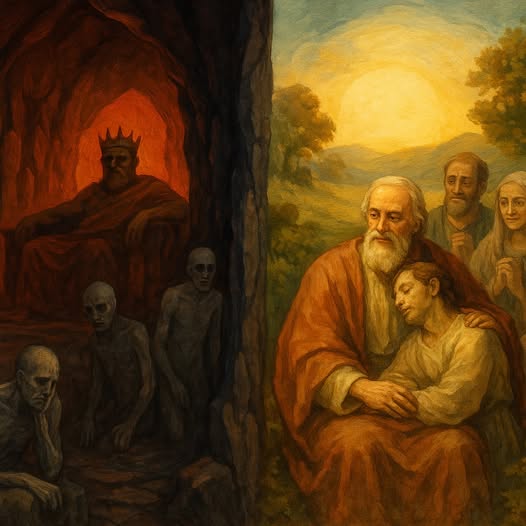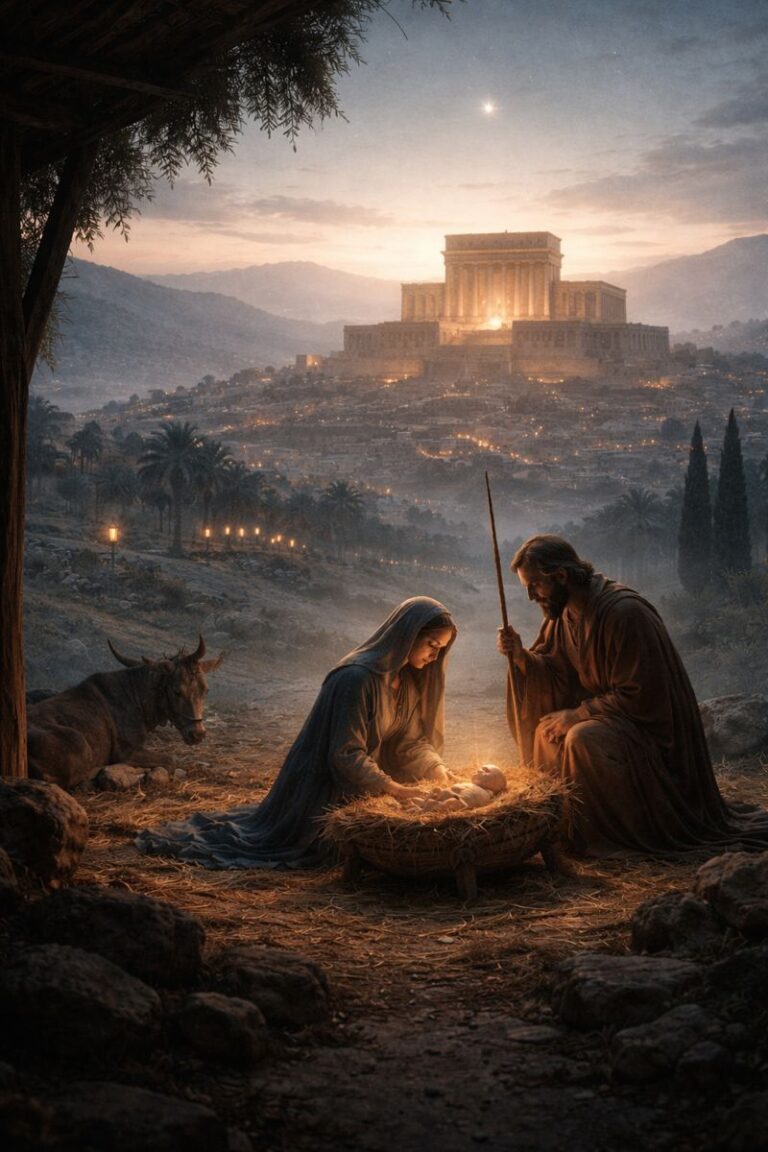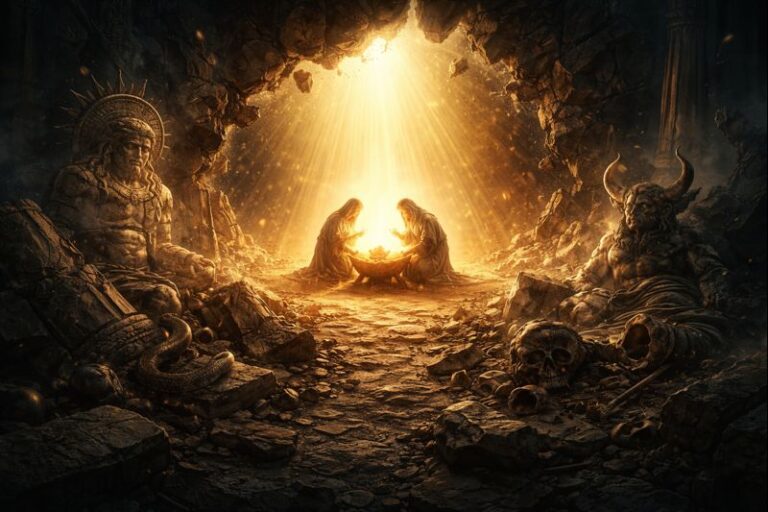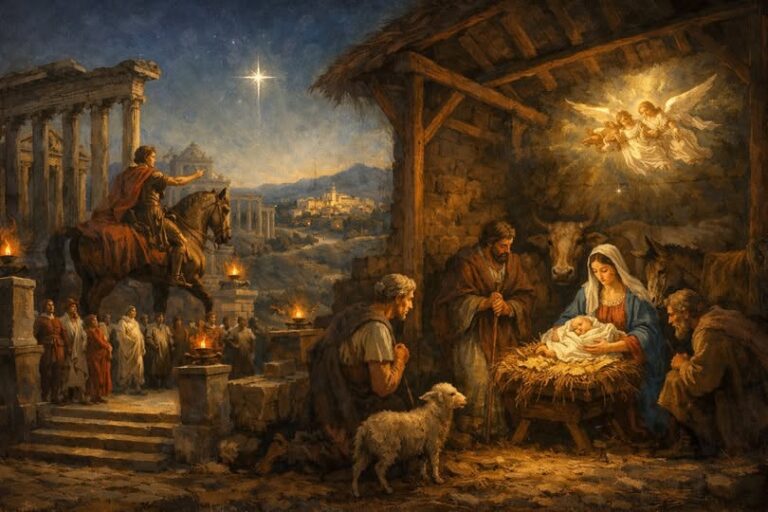
From Sheol to Glory: The Bosom of Abraham and the Triumph of Christ
The Hebrew Bible and Second Temple literature depict a complex view of the afterlife. Two key images emerge in this landscape: Sheol, the shadowy domain of the dead, and the Bosom of Abraham, a place of comfort for the righteous. These are not merely poetic metaphors. They reflect the theological tension between the despair of death and the hope of God’s promise, between being lost and being remembered.
Sheol: A Realm of Silence, Fear, and Annihilation
Sheol, in the Old Testament, is described as the place to which all people descend after death. It is not a place of fire or torment, nor is it paradise. It is a realm of dust and shadow where the dead dwell in silence. The Psalms describe it as a place where no one praises God, where remembrance fades, and where the dead are cut off from the land of the living. Job and Ecclesiastes echo this view, portraying Sheol as a state of stillness and forgetfulness.
But Sheol was not merely neutral. As Israel’s understanding of the spiritual world grew, Sheol took on a far more ominous tone. It was not simply the grave. It was a realm where the dead were at risk, vulnerable not just to forgetfulness, but to destruction. Without God’s protection, a soul in Sheol could suffer a second, more dreadful fate: annihilation through consumption or neglect.
This fear was rooted in the belief that stronger spirits, especially the Rephaim, still operated in the realm of the dead. The Rephaim were not ordinary shades. They were ancient, powerful dead—either fallen kings, demigod rulers, or remnants of the giant clans descended from the Nephilim. In passages like Isaiah 14, the Rephaim are described as rising from thrones in Sheol to greet newly arrived rulers with mockery. This indicates not only awareness but power. These spirits occupied positions of dominance in the underworld.
In this context, the average soul was at risk. If a person died and descended into Sheol without God’s protection, they might be forgotten completely, a fate considered equivalent to annihilation. Worse still, they might be consumed by the Rephaim, meaning their identity would be devoured, their existence absorbed into the more powerful. The soul would cease to exist as a distinct being. This was the true horror of Sheol. It was not simply death, it was the final erasure of a person’s name, memory, and being. To be remembered by God meant hope. To be forgotten meant oblivion.
The Bosom of Abraham: Rest, Remembrance, and Covenant Hope
In the face of this terrifying vision of Sheol, a new hope began to emerge during the Second Temple period. The faithful began to speak of a place within the realm of the dead where the righteous were kept safe, a place that preserved their identities, protected their souls, and awaited the fulfillment of God’s promises. This place came to be known as the Bosom of Abraham.
Importantly, the Bosom of Abraham was not thought of as a completely separate realm from Sheol. It was understood as a compartment within Sheol itself—a protected region where the righteous were shielded from the danger, torment, or oblivion that could threaten others. In Jewish apocalyptic writings like 1 Enoch, Sheol is often portrayed as divided, with distinct regions for the wicked and the righteous. The Bosom of Abraham represents the faithful compartment of Sheol, set apart by divine favor and covenantal hope.
The clearest image of this comes from Luke 16, where Jesus tells the story of the rich man and Lazarus. When Lazarus dies, he is carried by angels to the Bosom of Abraham. This is not a neutral grave. It is a place of comfort, intimacy, and divine remembrance. He is not alone. He is not forgotten. He is safe. Meanwhile, the rich man, though buried in luxury, finds himself in torment, separated by a great chasm from those under Abraham’s care.
This parable reflects the Jewish belief that Sheol had compartments, one for the righteous and one for the wicked. But more than that, it declares that the righteous are actively protected. They are not prey for the Rephaim. They are not subject to annihilation. Their names are known, and their souls are guarded until the day of resurrection.
The Bosom of Abraham, then, is not simply a comforting image. It is a theological response to the terrifying implications of Sheol. It declares that God sees, that God remembers, that the faithful dead are not at the mercy of underworld tyrants or cosmic amnesia. They rest in the care of the patriarch who represents the covenant itself.
Christ’s Descent and the End of Waiting
With the death and resurrection of Christ, the balance of power shifted forever. According to early Christian teaching, Jesus did not merely die. He descended to the realm of the dead. But unlike all others, He entered not as a captive, but as a conqueror.
It is important to distinguish what the New Testament teaches about this descent. In 1 Peter 3:19–20, Peter writes that Christ went and preached to the spirits in prison. These are not human souls in Sheol but a distinct group of beings—spiritual rebels who disobeyed in the days of Noah. The Greek term used in 2 Peter 2:4 is Tartarus, a word borrowed from Greek cosmology but repurposed to describe the deepest, most restricted part of the underworld where these rebellious sons of God were held. This concept aligns with the account in 1 Enoch, where the Watchers are bound in darkness awaiting final judgment.
Christ’s proclamation to these imprisoned spirits was not a message of salvation. It was a declaration of sovereign authority. He came not to negotiate but to announce that their doom was sealed and His kingdom had come.
While Tartarus held these divine rebels, the faithful dead were in another place—the Bosom of Abraham. These were not spirits in rebellion but souls who had trusted in God. And to them, Christ brought deliverance. This is what Ephesians 4:8–10 refers to when it says He led captivity captive. He emptied the Bosom of Abraham. The waiting was over. Redemption had arrived.
From that point forward, believers no longer needed to fear Sheol or await comfort in the Bosom. Paul could say with confidence that to be absent from the body was to be present with the Lord. The realm of the righteous dead had been brought into the light. Christ had triumphed over death and shattered the gates of the grave.
Conclusion
The journey from Sheol to the Bosom of Abraham, and ultimately into the presence of God, traces the arc of redemptive history. Sheol represents the terror of death in a fallen world, where the dead are vulnerable, where memory fades, and where the Rephaim rule from thrones in darkness. The Bosom of Abraham points to the growing hope that the righteous would not be abandoned, that God’s covenant was stronger than death.
But it is in Christ that this hope becomes reality. The Shepherd entered the grave to gather His sheep. He shattered the walls of forgetfulness. He tore the names of the faithful from the jaws of oblivion. And now, death has no dominion over them.
The faithful are not lost. They are not erased. They are remembered, they are gathered, and they are alive, awaiting the resurrection in the presence of the God who keeps every name and every promise.
Discussion Questions
- How does the concept of Sheol as a place of potential annihilation shape our understanding of ancient Israelite views on death and the afterlife?
- What role do the Rephaim play in the biblical and Second Temple understanding of Sheol, and why was their presence considered so dangerous to the souls of the dead?
- Why is the distinction between Tartarus and Sheol important when interpreting 1 Peter 3:19 and 2 Peter 2:4, and how does this affect our view of Christ’s descent?
- In what ways does the Bosom of Abraham reflect the growing hope in God’s covenant promises during the Second Temple period? How does Jesus’ parable in Luke 16 reinforce this?
- How does the fulfillment of these ideas in Christ’s death and resurrection impact Christian theology on the intermediate state and the fate of the faithful dead today?
Want to Know More?
- Michael S. Heiser – The Unseen Realm: Recovering the Supernatural Worldview of the Bible
Heiser explores the ancient Israelite concept of the underworld, including Sheol, the Rephaim, and the divine council, grounding it in both biblical texts and comparative ANE literature. - Richard Bauckham – The Fate of the Dead: Studies on the Jewish and Christian Apocalypses
This collection provides deep insight into Second Temple Jewish beliefs about Sheol, the intermediate state, and the evolution of ideas like the Bosom of Abraham. - Stephen De Young – The Religion of the Apostles: Orthodox Christianity in the First Century
In this work, De Young draws heavily on the ancient Near Eastern context, particularly the Baal Cycle, to explain how Sheol was understood in relation to the realm of death, and how the biblical authors portrayed Yahweh’s triumph over that realm. He shows how the Israelite vision of the underworld was a direct polemic against the Canaanite concept of death as a domain ruled by hostile gods like Mot and Baal, connecting that tradition to the New Testament’s picture of Christ’s victory over death. - George W. E. Nickelsburg – 1 Enoch: A Commentary on the Book of 1 Enoch, Chapters 1–36; 81–108
This scholarly work unpacks how the Book of Enoch shaped Jewish ideas about Tartarus, imprisoned Watchers, and the division between righteous and wicked dead during the Second Temple period. - N. T. Wright – Surprised by Hope: Rethinking Heaven, the Resurrection, and the Mission of the Church
Wright clarifies the difference between intermediate states like Sheol or Paradise and the ultimate Christian hope of bodily resurrection, addressing common misconceptions about life after death.





I absolutely love this blog! It tickles the Bible nerd in me. I was wondering if there was a way I could subscribe to this blog to be notified of when new posts are out. Like a mailing list or something?